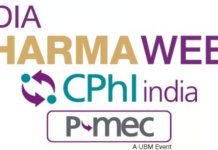New Delhi, April 27, 2016:As per Registrar General of India, Sample Registration System (SRS) 2013, the Infant Mortality Rate (IMR) is 40 per 1000 live births. The state wise details of IMR and rural- urban variation, is given in table below. The SRS, however, does not provide category- wise data separately for SC ST and Others.
|
S. No. |
State/UTs |
Statewise mortality rates, SRS 2013 |
||
|
Infant Mortality Rate |
||||
|
Total |
Rural |
Urban |
||
|
INDIA |
40 |
44 |
27 |
|
|
1 |
Bihar |
42 |
42 |
33 |
|
2 |
Chhattisgarh |
46 |
47 |
38 |
|
3 |
Himachal Pradesh |
35 |
35 |
23 |
|
4 |
Jammu & Kashmir |
37 |
39 |
28 |
|
5 |
Jharkhand |
37 |
38 |
27 |
|
6 |
Madhya Pradesh |
54 |
57 |
37 |
|
7 |
Odisha |
51 |
53 |
38 |
|
8 |
Rajasthan |
47 |
51 |
30 |
|
9 |
Uttar Pradesh |
50 |
53 |
38 |
|
10 |
Uttarakhand |
32 |
34 |
22 |
|
11 |
Arunachal Pradesh |
32 |
36 |
14 |
|
12 |
Assam |
54 |
56 |
32 |
|
13 |
Manipur |
10 |
10 |
10 |
|
14 |
Meghalaya |
47 |
48 |
40 |
|
15 |
Mizoram |
35 |
44 |
19 |
|
16 |
Nagaland |
18 |
18 |
19 |
|
17 |
Sikkim |
22 |
23 |
15 |
|
18 |
Tripura |
26 |
27 |
19 |
|
19 |
Andhra Pradesh |
39 |
44 |
29 |
|
20 |
Goa |
9 |
8 |
10 |
|
21 |
Gujarat |
36 |
43 |
22 |
|
22 |
Haryana |
41 |
44 |
32 |
|
23 |
Karnataka |
31 |
34 |
24 |
|
24 |
Kerala |
12 |
13 |
9 |
|
25 |
Maharashtra |
24 |
29 |
16 |
|
26 |
Punjab |
26 |
28 |
23 |
|
27 |
Tamil Nadu |
21 |
24 |
17 |
|
28 |
West Bengal |
31 |
32 |
26 |
|
29 |
A & N Islands |
24 |
29 |
13 |
As per the Registrar General of India, Sample Registration System (SRS) 2013, the Neonatal Mortality Rate (NMR) is 28 per 1000 live births The state wise details of IMR and rural- urban variation is given in table below.. The SRS, however, does not provide category- wise data separately for SC ST and Others.
|
S. No. |
State/UTs |
Statewise mortality rates, SRS 2013 |
||
|
Neonatal mortality rate |
||||
|
Total |
Rural |
Urban |
||
|
India |
28 |
31 |
15 |
|
|
1 |
Andhra Pradesh |
25 |
31 |
10 |
|
2 |
Assam |
27 |
29 |
10 |
|
3 |
Bihar |
28 |
29 |
11 |
|
4 |
Chhattisgarh |
31 |
31 |
26 |
|
5 |
Delhi |
16 |
24 |
15 |
|
6 |
Gujarat |
26 |
31 |
16 |
|
7 |
Haryana |
26 |
29 |
19 |
|
8 |
Himachal Pradesh |
25 |
26 |
11 |
|
9 |
Jammu & Kashmir |
29 |
31 |
18 |
|
10 |
Jharkhand |
26 |
28 |
12 |
|
11 |
Karnataka |
22 |
27 |
12 |
|
12 |
Kerala |
6 |
7 |
3 |
|
13 |
Madhya Pradesh |
36 |
39 |
23 |
|
14 |
Maharashtra |
17 |
21 |
11 |
|
15 |
Orissa |
37 |
39 |
26 |
|
16 |
Punjab |
16 |
15 |
16 |
|
17 |
Rajasthan |
32 |
36 |
17 |
|
18 |
Tamil Nadu |
15 |
18 |
11 |
|
19 |
Uttar Pradesh |
35 |
38 |
20 |
|
20 |
West Bengal |
21 |
22 |
15 |
As per Registrar General of India, Sample Registration System (SRS) 2013, the Under-five Mortality Rate (U5MR) is 49 per 1000 live births The state wise details of U5MR and rural- urban variation is is given in table below. The SRS, however, does not provide category- wise data separately for SC ST and Others.
|
S. No. |
State/UTs |
Statewise mortality rates, SRS 2013 |
||
|
Under 5 mortality rate |
||||
|
Total |
Rural |
Urban |
||
|
India |
49 |
55 |
29 |
|
|
1 |
Andhra Pradesh |
41 |
46 |
29 |
|
2 |
Assam |
73 |
77 |
34 |
|
3 |
Bihar |
54 |
56 |
37 |
|
4 |
Chhattisgarh |
53 |
56 |
38 |
|
5 |
Delhi |
26 |
40 |
24 |
|
6 |
Gujarat |
45 |
53 |
28 |
|
7 |
Haryana |
45 |
49 |
34 |
|
8 |
Himachal Pradesh |
41 |
41 |
32 |
|
9 |
Jammu & Kashmir |
40 |
42 |
29 |
|
10 |
Jharkhand |
48 |
51 |
27 |
|
11 |
Karnataka |
35 |
38 |
28 |
|
12 |
Kerala |
12 |
13 |
9 |
|
13 |
Madhya Pradesh |
69 |
75 |
40 |
|
14 |
Maharashtra |
26 |
32 |
18 |
|
15 |
Orissa |
66 |
70 |
39 |
|
16 |
Punjab |
31 |
35 |
24 |
|
17 |
Rajasthan |
57 |
63 |
32 |
|
18 |
Tamil Nadu |
23 |
26 |
17 |
|
19 |
Uttar Pradesh |
64 |
68 |
44 |
|
20 |
West Bengal |
35 |
37 |
26 |
The schemes/programmes/funds launched/ released to check high child mortality rate during the last three years and the current year, are as under:
To sharpen the focus on the low performing districts, 184 High Priority Districts (HPDs) have been identified for implementation of Reproductive Maternal Newborn Child Health+ Adolescent (RMNCH+A) interventions for achieving improved maternal and child health outcomes.
India Newborn Action Plan (INAP) was launched in 2014 to make concerted efforts towards attainment of the goals of “Single Digit Neonatal Mortality Rate” and “Single Digit Stillbirth Rate”, by 2030.
Newer interventions to reduce newborn mortality have also been implemented, including- Vitamin K injection at birth, Antenatal corticosteroids in preterm labour, Kangaroo Mother Care and empowering ANMs to provide Injection Gentamicin to young infants for possible serious bacterial infection.
In order to increase awareness about the use of ORS and Zinc in diarrhoea, an Intensified Diarrhoea Control Fortnight (IDCF) is being observed during July-August, with the ultimate aim of ‘zero child deaths due to childhood diarrhoea’. During fortnight health workers visited the households of under five children, conducted community level awareness generation activities and distributed ORS packets to the families with children under five years of age.
National Iron Plus Initiative (NIPI) – To address anaemia, NIPI has been launched which includes provision of supervised biweekly iron folic acid supplementation by ASHA for all under-five children and biannual deworming.
National Deworming Day (NDD)- Recognising worm infestation as an important cause of anaemia, the first National Deworming Day (NDD) was observed on 10th February, 2015 in 11 States/UT targeting all children in the age group of 1-19 years (both school enrolled and non-enrolled). Total of 8.98 crore children received deworming tablet (Albendazole) during the National Deworming Day. The same will be observed on an annual basis.
Rashtriya Bal Swasthya Karyakram (RBSK) has been launched (Feb 2013) to provide strategic interventions to address birth defects, delays and deficiencies and reduce out of pocket expenditure for the families on treatment by expanding the reach of mobile health teams at block level and establishing District Early Intervention Centres (DEICs) in the districts.
An estimated 27 crore children in the age group of zero to eighteen years are expected to be covered in a phased manner.13.3 lakhs have received free treatment including surgeries for congenital heart disease, cleft lip and correction of club foot etc.
Birth Defects Surveillance System (BDSS) is being established – to serve as a tool for identifying congenital anomalies. It is as a collaborative effort between the MoHFW, GoI, WHO and CDC.
Mission Indradhanush: Launched on 25th December, 2014, seeks to drive toward 90% full immunization coverage with all vaccines in the entire country by year 2020 with a high focus on the 201 identified districts.
Mission Indradhanush Phase II has begun in 352 districts across the country (279 medium priority districts + 33 districts from North Eastern States + 44 districts from Phase I districts where large number of missed out children were detected during monitoring of phase I of Mission Indradhanush).
The Health Minister, Shri J P Nadda stated this in a written reply in the Rajya Sabha here today.























